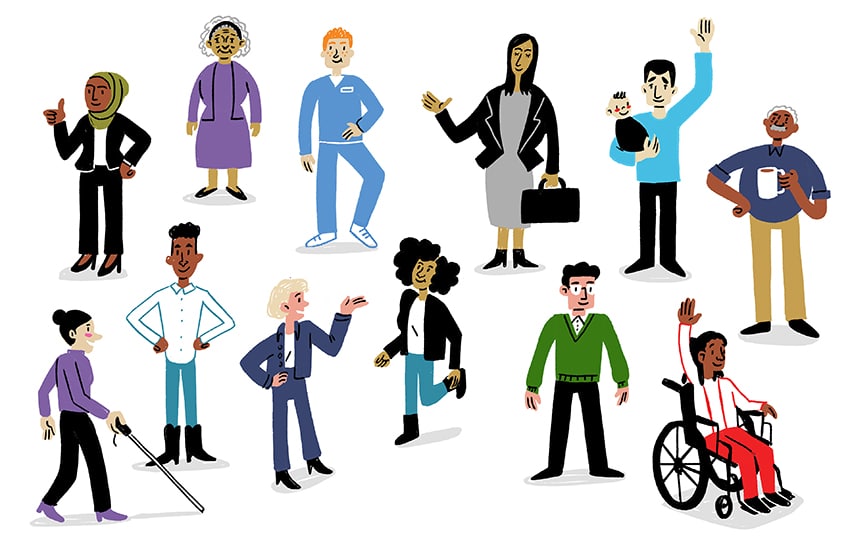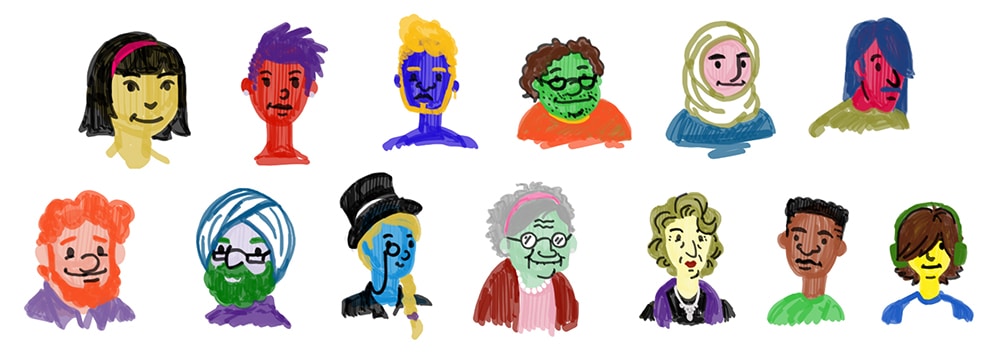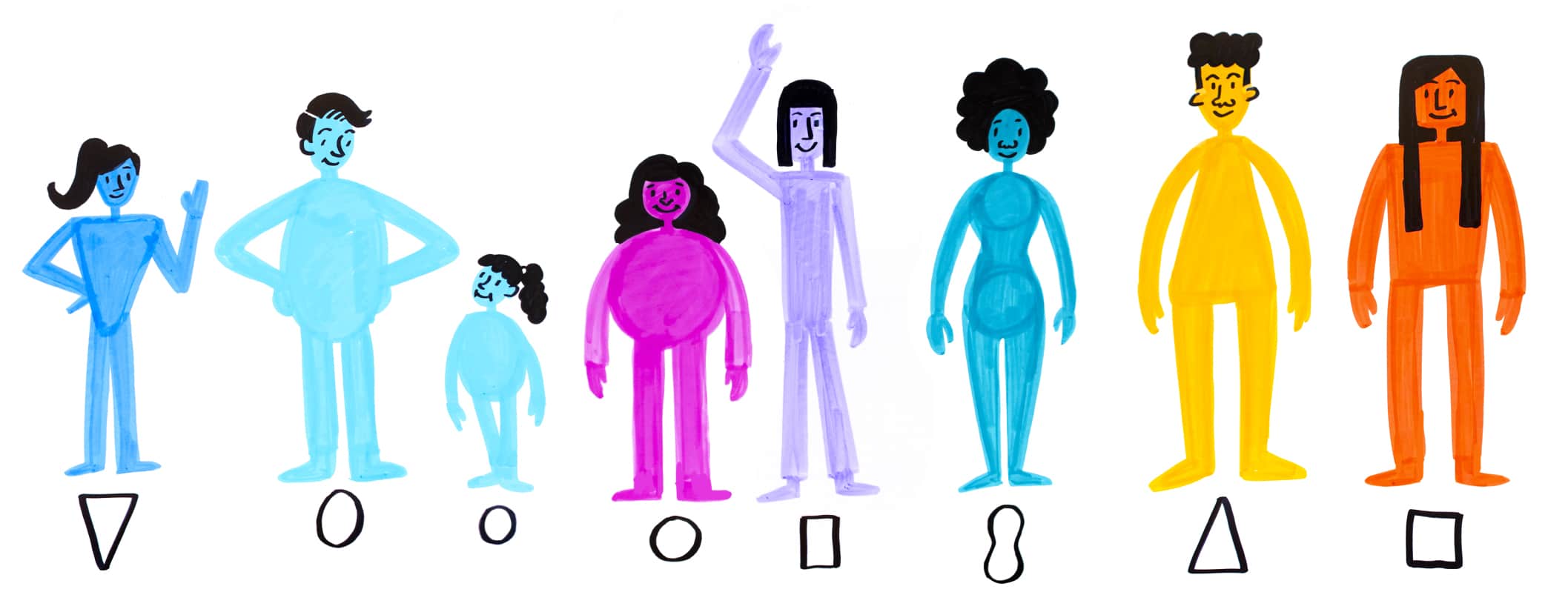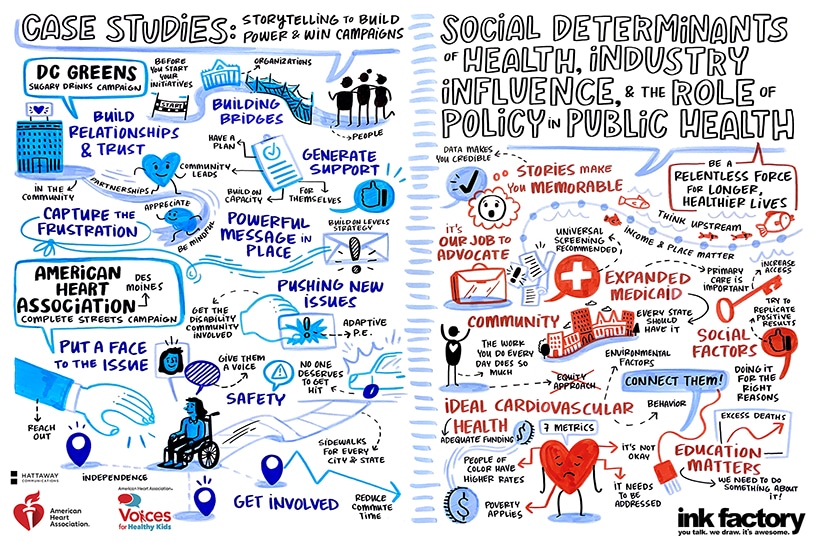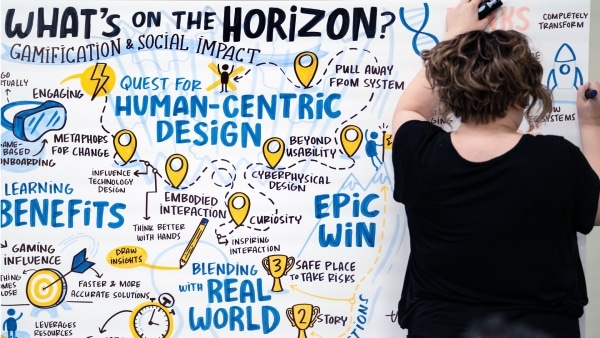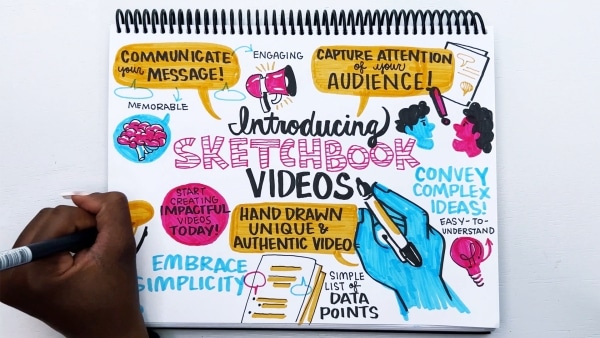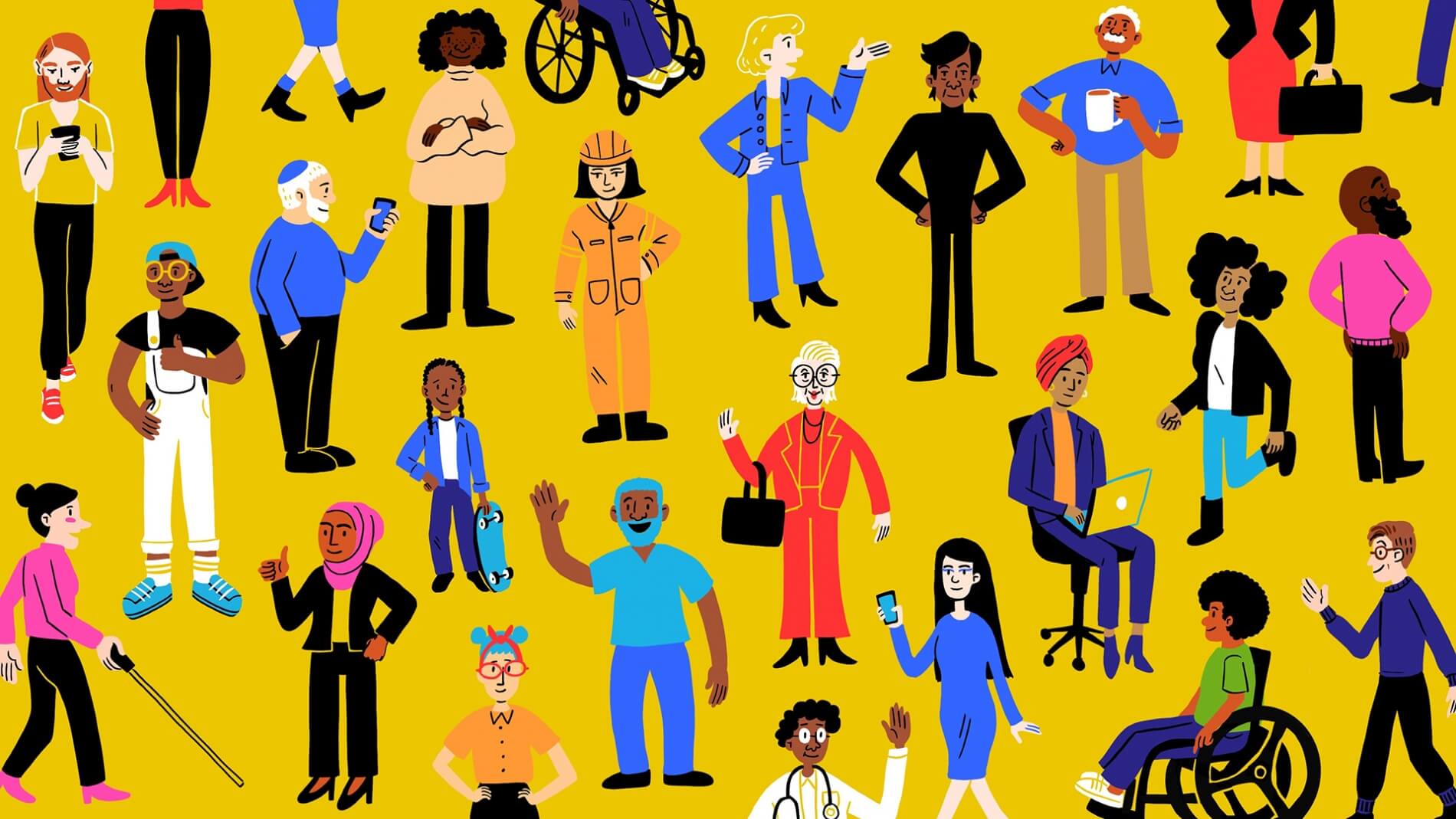
Diversity Drawing at Ink Factory (And Why It Matters)
As professional listeners and visual note-takers, there are inevitable trends, buzzwords, and phrases that consistently pop up at events we support. “Diversity” is having a moment as of the past few years–and we hope it’s here to stay. We know that representation matters. That’s why drawing diversity is a key part of our goals and values here at Ink Factory.
“Diversity is the range of human differences, including but not limited to race, ethnicity, gender, gender identity, sexual orientation, age, social class, physical ability or attributes, religious or ethical values system, national origin, and political beliefs.”
There is a lack of representation everywhere!
We’re all limited by our own experiences, and tend to represent things that are familiar to us. Art is, in part, a reflection of the artist. If you’re white, cisgender, straight, and young, you’re more likely to represent those kinds of people and experiences in your work. That’s the unfortunate pattern we see repeatedly in movies, TV, commercials, print ads and more.
But our work is not for us–it’s for our diverse clients and their audiences. Which is why we always work toward creating images that are more inclusive of everyone’s experiences. It’s not hard to do. It just takes a little research, effort, and willingness to learn.
If you work for a Black-owned business or a nonprofit that fights for racial justice, you can apply for free visual notes here.
To draw diversity, turn off the default
What’s wrong with drawing generic characters? Well, that approach misses out on an opportunity to represent people who are generally excluded from representation. And there are so many other reasons to include diverse people in your drawings:
- “Generic” drawings of people tend to subconsciously read as white men, and don’t actually represent everyone.
- More diverse drawings make our work more interesting. And though you might not recognize it if you are unaffected by lack of representation, diverse representation lets people of all identities feel seen, welcome and safe.
- By drawing diversity, we can subconsciously push against societally ingrained biases about race, gender, and more.
Our artists consider layered identities when creating characters to draw in videos, illustrations, and visual notes. We aim to fight our own instincts and biases by creating work in contradiction to societal norms, so we’re intentional about depicting minorities in roles traditionally reserved for people with privilege. Age, race, height, weight, ability, gender, and religious signifiers all come into play when we draw a character.
Diversify, don’t tokenize
We don’t like to lean into stereotypes about specific groups of people. The point of diverse drawing is to lift up marginalized communities by showing them (and the world) the possibilities that exist for all types of people. When drawings play into stereotypes, even if the intent for diversity is there, they end up being counter-productive. And when drawings contradict stereotypes, they empower those people who are hurt most by those stereotypes!
Characters designed for AAPM&R
Staying aware of our own biases
Drawing diversity isn’t a one-and-done process, or a task you can check off a list. It’s an ongoing process that requires artists to constantly reflect and improve. That’s one of the reasons why we hold quarterly group critiques and feedback sessions. Sharing work with others allows you to see patterns in your work that you might otherwise miss. What types of people are consistently made the focus on our drawings, and which ones are subjugated to the sidelines? We see minority groups being sidelined all the time when it comes to representation. Asking questions like this and keeping a critical lens on our own work will help us evolve into more inclusive artists.
When we have to draw fast
Drawing fast (a necessity when visual note-taking) can lead us to think there’s only time to draw the most simple default person – one that often reads, at the very least, as an able-bodied masculine figure. We take the time to make sure even our simplest representations of people are diverse.
Drawing diversity means embracing specificity
Infusing visuals with specificity makes them more interesting! When we’re drawing on-site, we love looking at people in the room for inspiration when drawing characters. And when we’re creating illustrations and videos, we ask our clients to provide images of the real people they work with and their employees so we can create visuals that speak to their people. Our clients love to see their diverse teams reflected in the visuals we create for them.
Is your organization taking steps to further the diversity of its workforce? Visual note-taking can be a piece of that journey. When you have a visual note-taker in the room, they can make sure everyone’s voice and ideas are represented through the power of drawing.
